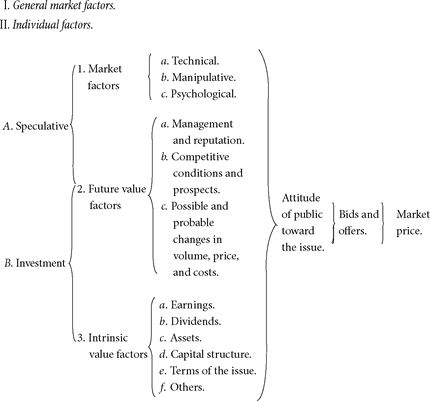strategies
value investing; our core philosophy
We believe that markets are mostly efficient and that securities are fairly valued. We seek opportunities where we believe the market is inefficient and where temporary imbalances exist in terms of price.
Such opportunities typically occur because of behavioural biases that lead markets astray. We try to exploit these persistent biases.
We apply a disciplined, long-term orientated opportunistic value approach to our portfolio selection and are committed to producing attractive positive long-term returns irrespective of market returns. We fundamentally believe that good businesses make sound investments only at bargain prices.
Value investors exploit the systematic behavioural weaknesses that the vast majority of investors succumb to when making investment decisions. These biases can be exploited by implementing the “margin-of-safety” principle: Described in Benjamin Graham iconic work The Intelligent Investor (1949). While most investors are too optimistic about the future operating results, Graham advises to invest in stocks that have a substantial fundamental safety margin. The margin of safety protects the investor against unexpected negative evolutions in the (business) economic environment and minimizes the risk of “a permanent loss of capital.”
we select companies that that are financially robust
We believe companies should dispose of sufficient financial power at all times to protect against the permanent impairment of capital. This financial power becomes extremely important in times of economic crisis and/or industry distress.

we aim to acquire companies at an attractive valuation
We avoid stocks with high valuation multiples (sometimes termed growth stocks) and pick stocks with low valuation multiples (sometimes called value stocks or bargain issues).

we consider forecasts to be speculative
We do not spend time forecasting the movements of the general market, or selecting stocks or industrial groups that will “do better” over a fairly short period in the future, but focus on long-term returns irrespective of market returns.

Benjamin Graham is widely considered to be to founding father of value investing. The seminal books Security Analysis (Graham & Dodd, 1934) and The Intelligent Investor (Graham, 1949) are considered to be must reads for every value investor. If we concentrate on the quantitative aspect in Ben Graham’s investment approach he also laid the foundations of quantitative value investing with his works. The quantitative aspect implies focusing on “earnings, dividends, assets and capital structure”. Investment decisions primarily need to be taken based on the historical financial statements. Unfortunately investors often make investment decisions largely based on speculative and subjective elements.
Numerous studies have demonstrated the outperformance of value stocks: e.g. Graham, 1976; Basu, 1977; Chan, Hamao and Lakonishok, 1991; Davis, 1994; Fama and French, 1992, 1998; Lakonishok, Shleifer and Vishny, 1994; Haugen and Baker, 1996, 2008; Brouwer, van der Put and Veld, 1996; Bauman, Conover and Miller, 1998; Chan and Lakonishok, 2004; Anderson and Brooks, 2006; de Groot, Pang and Swinkels, 2010
In light of the robust historical evidence in favour of value investing over extended periods of time it is particularly interesting why this well-researched market inefficiency isn’t exploited by more investors. More importantly; why doesn’t the opportunity disappear as more investors embrace the idea and the opportunity disappears with increased market efficiency?
Whilst the value investing approach is conceptually easy to understand it is very hard to practice. The Value Investing opportunity is firmly rooted in behavioural biases that are ingrained in the human psyche. The main reason is for its existence is Career Risk, as explained by Haugen (2010) in The New Finance. Stock prices are predominantly influenced by institutional investors (like pension funds, insurance companies, trusts and endowment funds).
For their stock investments the performance is usually measured relative to a stock index like the S&P 500. These indexes are typically dominated by expensive growth stocks. The performance of the institutional investors is evaluated over relatively short time periods of typically of less than three to five years. Consequently these institutional investors have very short horizons.
Value investing is a long-term investment strategy that focuses on avoiding a ‘permanent loss of capital’ and may (temporarily) underperform the market. This is particularly relevant during investment bubbles (e.g. the TMT stock market bubble in the late 90’s when most value investors underperformed relative to the market). Because institutional investors are likely to be severely penalized or even fired for underperformance relative to these indexes they hold portfolios with more expensive growth stocks rather than cheaper value stocks, even though some know this brings underperformance in the long term.
The conclusion is that most institutional investors are unable to take advantage of the Value Investing opportunity despite a greater awareness of the outperformance. This is supported by the surprising fact that there is no evidence of the Value Investing opportunity fading away.
quantitative value
A strategy that involves minimal human involvement in the security and portfolio selection.
Consequently the investment decisions should be free of the human biases we suffer from.
We simply enjoy challenging the market and get great satisfaction when we’re right. We seek opportunities where we believe the market is inefficient and where temporary imbalances exist in terms of price.

We suggest that this psychological phenomenon is closely related to the dominant importance assumed in recent years by intagible factors of value, viz., good-will, management, expected earning powers, etc. Such value factors, while undoubtly real, are not susceptible to mathematical calculation; hence the standardsby which they are measured are to a great extent arbitrary and can suffer the widest variations in accordance with the prevalent psychology.
With speculative elements Graham means the “intangible value factors” such as the assessment of management and forecasts of future pay-offs. Such “intangible value factors” are not objectively quantifiable; the valuation of these factors is extremely subjective and fluctuates widely with the optimism and pessimism on the stock market.
In Security Analysis (1934) Graham refers for example to The Roaring Twenties or The New Era; from 1925 through 1929 the valuation of the US stock market substantially surpassed the historical average. More and more investors paid attention to future earnings expectations, expectations that invariably were raised in order to account for the absurd valuations.In 1949 Benjamin Graham concluded that this fundamental quantitative approach has realized attractive returns in the past.
There is no guaranty that this fundamental quantitative approach will continue to show favourable results under the unknown of the future. But, equally, there is no reason for pessimism on this score.
The quantitative approach also has evidently realized strong returns in the decades after 1949. In the ‘research library’ section of this website you can find reference to the important papers supporting this conclusion. More importantly, there is no sign of the quantitative approach being traded away through increased market efficiency either.
active value
value analysis
Once we have identified an interesting company we conduct a financial analysis. We start by analysing the financial data of the company using a minimum of seven years if available. Initially we focus on the balance sheet as it is the least prone to accounting manipulation. We look at the assets. Companies with high levels of debt should be avoided and we like companies that are not capital or asset intensive. Next we focus strongly on cash flows as they are also less likely to be the subject of accounting manipulation and is the real life blood of any company. We like companies that generate a lot of free cash flow. We look for sustainable earnings power and rejoice if we find evidence of a franchise.
review & decision
When we feel we have an interesting find we work through a check list which we have put together over the years of reading and practical experience. The check list allows us to quickly identify where we have to dig deeper into the financial statements of the company. Should a company pass our checklist we read through the annual, interim and quarterly financial reports to get to know the management and the business of the company? We revisit key issues and make sure there are no personal biases working. Only when we are satisfied with all of the above do we invest.
monitoring & risk management
We focus on our best ideas and do not believe in diluting them down with inferior ones and thus invest in a concentrated fashion. However, as no one can foresee the future development of security prices and as we want to limit the loss of capital as far as possible. Our portfolio therefor typically consists of between 20 to 30 securities. Securities are bought when they offer an attractive discount to underlying value. Selling takes place when we believe a security is fairly valued or if the proceeds can be invested in a more attractive position. Although this seems a simple strategy it is remarkably difficult to execute.
We define risk as the permanent loss of capital. The popular concept of equating risk with the inevitable short-term movements of the market seems counterintuitive to us. We may buy more of a security when offered to us at a lower price. We believe that buying a security that is trading substantially below its intrinsic value is the best way to eliminate risk.
Even though we believe in concentrated portfolios we seek diversification; e.g. by industry, market capitalisation and type of investment. We do not use leverage. We are quite simplistic when it comes to hedging, derivatives and other exotics; capital structure comes down to two things: 1) equity, where you own part of a company, and 2) debt, where you lend money to a company. We share the view that everything else has been invented by Wall Street to confuse you and generate fees.
If after all of the above we still find ourselves on the wrong end of the trade then patience is our default strategy. If we are still convinced about our original premises and have no better use for our capital we will trust our judgment that the stuck was worth buying and that in the end the anomaly will be dissipated. However this is probably the most difficult one to defend.
